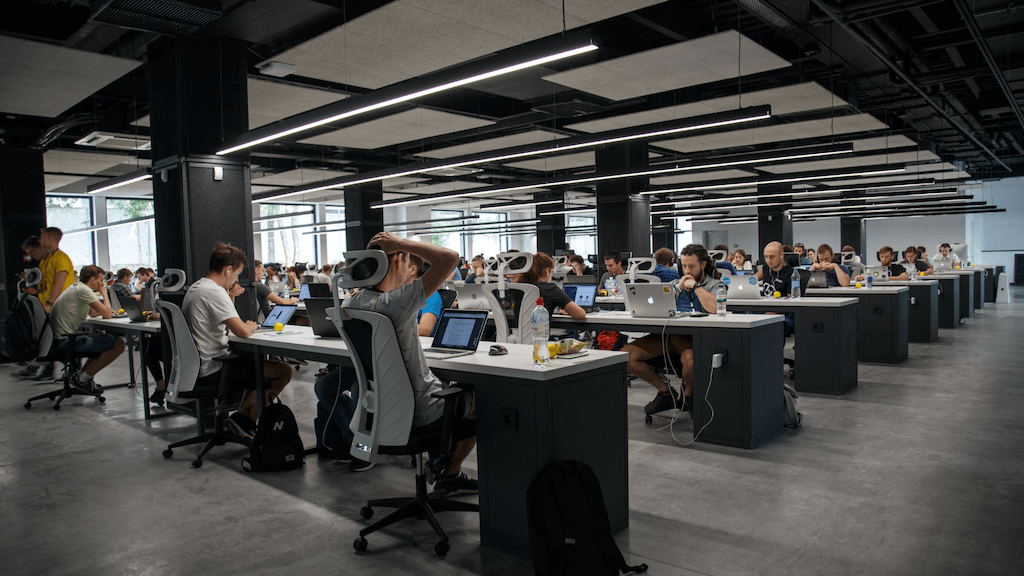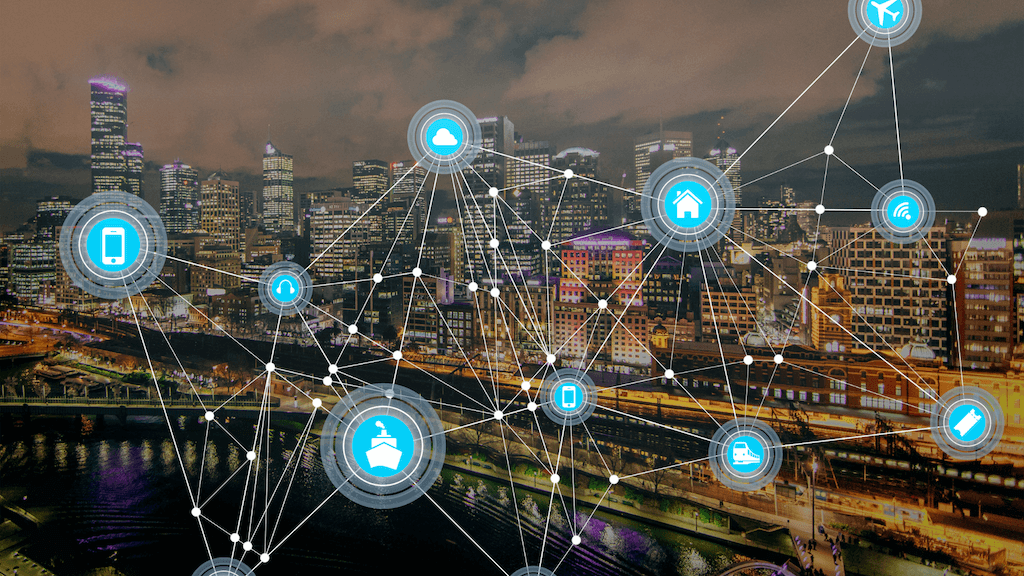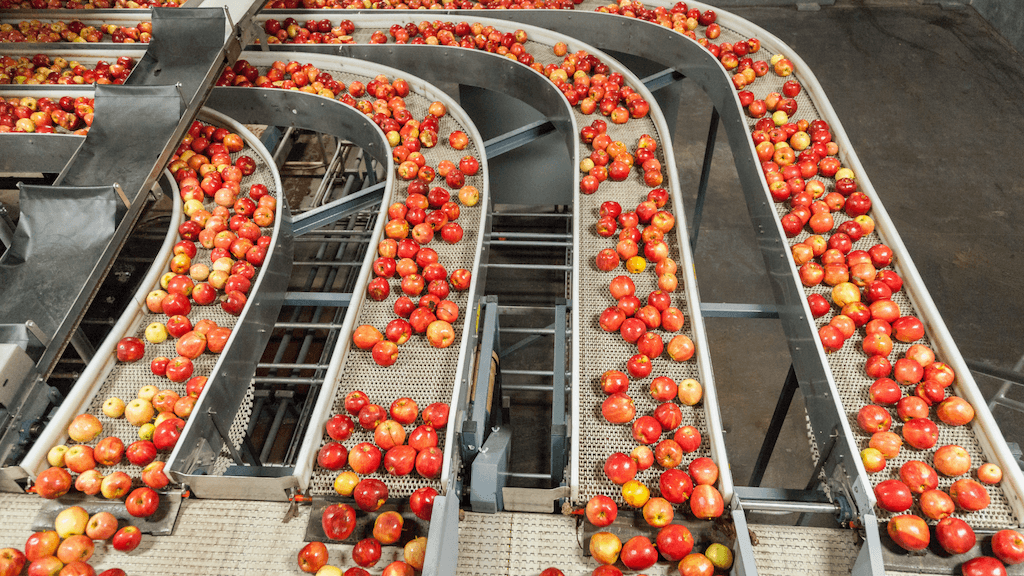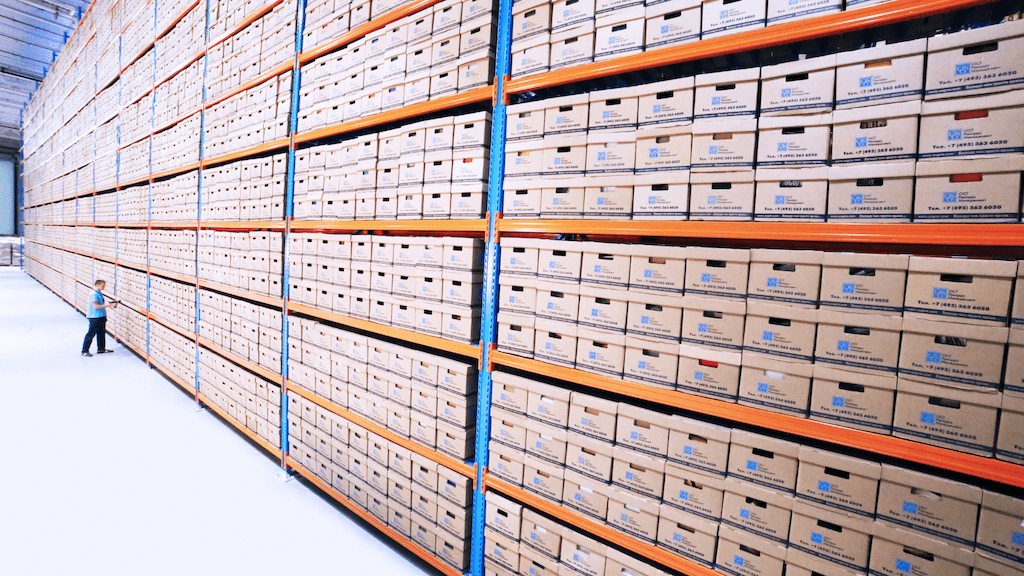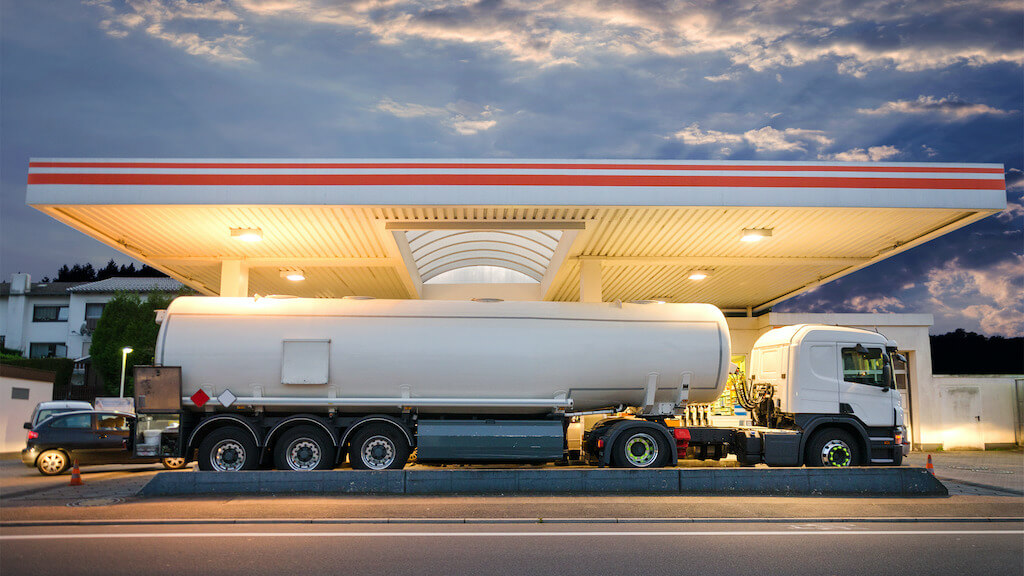Tag: AI
Technological innovations are caused by many factors, such as our needs, lifestyle preferences, and competition in the marketplace. In recent decades these advances have become so frequent that we got used to the fact that each year brings new trends.
However, 2022 is a special year in that sense, as the recent pandemic (which still troubles the world) has forced many individuals, companies, governments and entities to think outside the box and adjust their operations to the current situation.
In addition to digitization, AI technologies, like machine learning and algorithms that drive smart devices (such as smartphones), continue to evolve rapidly. Getting smarter with each iteration, they are gradually penetrating deeper into our lives. Not only do they help us accomplish more tasks at work but also make everyday home routines less complicated.
Artificial Intelligence (AI) has also played an important role in addressing the inconvenience caused by the coronavirus. So, let’s see what are the AI trends of 2022 that will help companies face and overcome the “new reality”.
AI + Automation
The concept of automation is nothing new to us and has been used since the industrial revolution.
When we talk about basic automation, we mean minimizing human involvement by introducing equipment that automates simple and unsophisticated tasks. Regardless of whether human involvement is minimized, monitoring of the process is still required.
However, what is relatively new to us is Artificial Intelligence automation also known as Intelligent Process Automation (IPA).
Since IPA combines the robotic process with elements of Artificial Intelligence such as Machine Learning (ML), it serves as a powerful tool for companies by imitating human activities and eventually becoming even more efficient at it.
The complete digitization of customer service due to the pandemic demonstrated the importance of AI automations. In most cases, businesses were overwhelmed by incoming customer inquiries via email, live chat, phone calls, etc. and they just couldn’t serve all of the clients, resulting in long wait times and service times.
However, companies with AI automations were better able to handle the situation by freeing up staff time with AI-powered chatbots and virtual assistants. This, in addition to reducing costs and waiting times, allowed employees to focus their attention on more meaningful operations with less stress.
With all the experience and examples, the companies plan to invest and implement more of these technologies in their operations. 66% of global business leaders surveyed said they are already testing solutions to at least automate one of their business processes.
AI + IoT


Today we are more connected than ever. Electronic devices and gadgets became an inseparable part of our lives.
Like us, most businesses depend on electronic devices. Video cameras, smart locks, temperature sensors are just a fraction of the gadgets that companies use to better manage their operations.
There may be nothing special about these devices from the first glance, but what makes them unique is their ability to communicate with each other.
Such a capacity of physical objects classifies them as the Internet of Things, which means that all devices and sensors are connected to each other and continuously exchange data over the Internet.
However, things get more interesting when Artificial Intelligence also gets involved in this process. As IoT devices collect mountains of data, AI can help companies speed up the data analysis process and provide concrete insights to help make informed data-driven decisions.
In this way, by integrating IoT and AI, companies can:
- Improve operational efficiency
- Prevent equipment failures
- Enhance safety and security
These benefits are exactly the reason why recent research showed that companies that use the combination of IoT and AI have reported exceeding value expectations.
AI + Augmented reality


Augmented Reality (AR) refers to a technology in which a computer-generated image is placed in front of the user’s view of the real world with the help of an electronic device such as a telephone.
One of the most famous examples of AR was the game Pokemon Go, where users see and catch virtual pokemons in front of them with the help of the phone’s camera.
However, AR has more complicated and useful applications when it comes to the business world. Companies can now showcase their products in front of interested customers who don’t even have to leave home.
This means that people can have the experience of trying on virtual shoes, opening the door and looking inside their desired cars, and even trying on what makeup will look like before purchasing.
AI further enhances what AR has to offer. Intelligent AI algorithms can detect items in real time when cameras point them, which are then labeled in the AR app, making the shopping experience more streamlined.
Businesses began to pay attention to AR, especially after COVID restrictions that prohibited some businesses from operating and people from leaving their apartments. The uses of AR go beyond the retail industry and can also be applied to other sectors like education.
Conclusion
Despite the devastating effect the pandemic had on the world, it forced us to find innovative ways to overcome challenges and made us see the real benefit of Artificial Intelligence in almost every sector. By looking at all these developments in AI, we can say that 2022 will really be an exciting year.
If you think your business has a lot to gain from implementing AI, schedule a free consultation call with our experts so that we can discuss your project in more detail and find the concrete benefits that our team can offer your business.
“Customer service represents the heart of a brand in the hearts of its customers.” ~ Kate Nasser.
Customer service is the assistance you offer to your customers before or after they purchase your product or service. One of its earliest documented examples can be found in the early 1800s, when many companies began to realize the important role that customer service plays in business success.
However, the rapid rise in customer expectations has created a serious challenge for companies. With all the new digital channels and increased competition, it’s no wonder some companies have a hard time keeping all of their customers happy.
As this saying goes “Modern problems require modern solutions”, which is why many companies began looking for innovative ways to ensure customer satisfaction.
One of these modern solutions is Artificial Intelligence (AI), which began to be increasingly adopted by companies around the world to improve the overall customer experience.
In fact, it is estimated that by 2025 around 95% of customer interactions will be handled by AI. So what does this technology have to offer that so many companies decided to implement it?
Artificial Intelligence Defined
AI is the use of computers to perform tasks that are typically associated with intelligent beings, such as visual perception, speech recognition, decision-making and language translation. Using these technologies can help companies quickly analyze large amounts of data (including social media comments), provide quick responses to customer questions, anticipate what they want next and generally increase the overall customer satisfaction.
AI-powered chatbots


Chatbots are applications that help businesses automate online messaging interactions with customers to some degree. However, AI chatbots are a step forward in this technology and can guide customers through more complex operations.
AI chatbots are not limited to pre-programmed responses and commands, they continually learn from the data provided and from the interaction of each customer.
Using Natural Language Processing (NLP) capabilities, chatbots break down the question and compare it to data in their knowledge base or previous answers that made customers in similar situations satisfied and happy.
The more interactions chatbots have with customers the larger is its knowledge base, giving more accurate and useful information to interested parties.
Reduced waiting time
Another great advantage of AI chatbots is the reduced waiting time and service time. Research shows that due to long wait times and service times, companies reported 75% of customer churn.
Using smart chatbots can speed up this process, as they mostly don’t require the involvement of human agents. Therefore, when a service agent is limited in terms of the number of people they can serve, the chatbot is not – it can respond to multiple requests in a matter of seconds.
AI chatbots are estimated to save businesses around $8 billion per year in customer support costs.
24/7 availability
Today customers demand constant availability from companies. This is especially important if the business is international and operates in countries with different time zones. Therefore, 24/7 availability shows your customers that you are ready to help them when needed, giving your business a positive reputation.
However, this can be a difficult task to accomplish considering that the average worker works 8 hours a day. 24/7 availability means you need to have different shifts of workers to ensure your customers get uninterrupted support.
AI Chatbot is a more effective and efficient solution which many international companies implement in such scenarios. Chatbot knows no 8-hour work schedule and requires no rest, unlike your staff. It is always readily available to provide your clients’ assistance and guide them with their inquiries.
AI-powered customer feedback analysis


Another way AI can help businesses is by constantly checking different digital channels, such as forums, review websites, emails and chats, to find specific problems that users are experiencing.
In addition to identifying customer pain points and improving your product or service based on these insights, this proactive feedback analysis approach helps your business establish a strong connection with your users and identify the root cause of customer problems.
With the help of NLP and neural networks, the artificial intelligence solution will analyze customer feedback in seconds and classify it based on user sentiment. It will also provide exact keywords regarding the problem that customers have encountered.
In this way, companies will always be aware of what aspects of their service customers like best or what things need improvement, giving them the opportunity to respond to the problem before the specific user leaves the business and churns.
Video analytics


Last but not least, another powerful tool for improving customer service is video analytics. Video analytics is a technology that with the help of algorithms analyzes the content of a digital video to find customer trends and ensure security.
What are the benefits for companies? With the help of this technology, companies can analyze heat maps and customer journeys, discovering the most common routes that help retailers better display their most popular products and offers.
Video Analytics also helps facilities identify peak traffic at their location and understand when additional staff is required to provide faster service.
Once the service is finished, the facial expression of the visitors can also be detected and connected with the quality of the service, giving more precise information on customer satisfaction.
Conclusion
Many companies still ignore the implementation of AI because they believe it is a more expensive solution. However, the truth is that AI is a more profitable solution for your business in the long run.
Another important point is that the Artificial Intelligence solution not only improves customer satisfaction but also makes your staff happier. Delegating boring and repetitive tasks to artificial intelligence while providing your employees with meaningful projects engages and retains talents within your company.
If the reason you are still hesitant to implement AI in your business is because you are not equipped with the necessary resources to implement AI, that is not a problem either.
MaxinAI is pleased to offer you a free consultation call with our Artificial Intelligence experts so that we can better understand the project you have in mind and provide you with a customized AI solution that will ensure its success.
With the help of MaxinAI, ExtractHD, a document extraction platform, was able to offer a solution that scans documents and extracts text, saving hours of manual labor.
Challenge
Property managers must process and file mountains of paperwork related to their properties. This information needs to be kept searchable and accurately indexed for compliance reasons as well as to provide an audit to their landlord clients.
- Approximately 20% of the working day is spent searching, indexing and managing property information.
- Across an organisation this adds up to hundreds of thousands in cost annually.
This can be a time-consuming and tedious process. Therefore, property managers are using intelligent automation to reduce manual work and gain more control over their data.
The solution is AI data extraction tool that can extract, categorize and index all kinds of property data. This can help save time on documents and keep all data easily accessible via one platform.
ExtractHD – capturing property data in seconds
Rentancy is a UK company providing property management software that automates the role of the property manager. Because of this, the Rentancy team partnered with MaxinAI to offer a solution based on Artificial Intelligence, ExtractHD.com, was created to automate property document extraction with high accuracy, saving thousands of dollars and man-hours.
How does ExtractHD work?
ExtractHD is a website, run by Rentancy and uses the technology of MaxinAI.com, where users can upload an image of a gas certificate or other property documents and automatically extract the necessary fields which can then be turned into renewal reminders and key data.
Our team provides ExtractHD with a technology based on Optical Character Recognition (OCR) and Natural Language Processing (NLP) that uses smart algorithms to analyze the information within physical documents, making it possible to understand the data contained in these documents and digitize them in seconds. The data is later connected to the corresponding tag in the system (name, invoice number, start date, etc.).
Who can benefit from this solution?
- Property Managers
Managers must focus on important tasks, but often in the property industry, these same managers are bombarded with mountains of repetitive tasks related to extracting data from documents. However, ExtractHD returns this time to managers with intelligent automation. - Property teams
ExtractHD digitizes all documents and can be accessed from any device, improving productivity and facilitating the exchange of information within the team. - Tenants
With the help of the software, tenants have access to organized information in a snap of fingers, reducing workload and eliminating surprises. - Anyone who dislikes monotonous work


Here is what the process looks like:
- Upload
Upload a scanned version of a physical document. - Process
ExtractHD will process documents using NLP Deep Learning models, making sense of your document text for further data extraction. - Extract
The key data will be extracted from documents and connected to the corresponding tag (name, invoice number, start date, etc.). - Save Money
Automating the above-mentioned process will free around 30% of the workday for workers.
How ExtractHD simplifies daily life for property managers
Spending time storing, inspecting and analyzing stacks of documents can take many hours. In today’s competitive environment, spending time searching for information that can be found in seconds can be interpreted as wasted. This is exactly what ExtractHD wants to eliminate. Here are the benefits one gets with the software:
- Increased productivity
Instead of manual data entry, one can focus on the tasks that really matter to them or their business, resulting in increased productivity. - Accuracy and Speed:
With ExtractHD, data extraction from property documents can be done more accurately and in a matter of seconds, eliminating human error. - Reduced costs
People detest repetitive work so much that they are even willing to hire someone else to do these monotonous tasks. Automating this process and saving time will ultimately be more economical for the user.
Range of property-related documents that ExtractHD can process with our dedicated AI engine


People who are dedicated to the real estate sector know the immense amount of documentation that must be faced sometimes even daily. ExtractHD made this struggle a thing of the past and with MaxinAI’s solution, offers automatic data extraction from documents such as:
- Gas Certificate
- Energy Certificate
- Electricity Certificate
- H&S Survey
- Tenancy Agreement
- +Many More
The smarter way to handle your documents
The collective partnership of MaxinAI and Rentancy resulted in an innovative solution that combats ineffective manual work and with automated data extraction, returns control of time and decisions back to people.
With MaxinAI’s smart technology, ExtractHD is successfully operating in the data extraction industry, as its software extracts data with the highest precision so users can rest easy and spend their precious time on the things that really matter.
If you are interested in partnering for a specific project, where MaxinAI leads technology development and your company is responsible for business development, schedule a free call with our experts, we are open to partnerships!
P.S. in case of mutual interest, we offer a pilot project at no cost so it does not cost you anything to test our solution.
Rapid technological innovation has forced companies to follow suit and also innovate their processes. We have heard many stories where companies that did not keep up with the trend were quickly replaced by competitors that kept pace with innovation.
Today, AI-powered solutions are the biggest innovation that companies implement in their operations. But the effectiveness of AI solutions is based on the availability of data and its quality, which can be managed with IoT devices.
That is why large companies such as Amazon, Apple, Tesla, Google, Facebook and many others use both technologies to guarantee an innovative and high quality service to their customers.
However, the beauty of IoT and AI is that it is not exclusive and can be used by companies of any size.
Today we will discuss how companies can grow and improve their operations with the help of Artificial Intelligence and the Internet of Things.
What is the Internet of Things and how does it work?
The Internet of Things refers to objects that are connected to each other in real-time and exchange information with installed sensors, software, and other tools.
With the smart devices around us, it is not difficult to find a real-life example even in our own home. For example, smart speakers like Alexa or Google Home can talk to other appliances in your house and modify these appliances according to your desire.
Therefore, Alexa is one of the examples of IoT devices, as it is connected with other devices and exchanges data with them. However, when it comes to the business world, taking the power of AI and merging it with IoT devices produces benefits that go beyond simple communication between devices.
What is Artificial Intelligence (AI)?
AI is a broad term used for all the systems that imitate the cognitive functions in humans such as learning, understanding, reasoning and decision making. In other words, AI can be defined as a machine completing tasks normally done by humans without human assistance.
AI is the future of business operations and it is currently being implemented in all areas where machines carry out the tasks handled by humans until now. In other words, AI is revolutionizing your company’s operations.
Benefits of integrating AI and IoT
When we talk about AI solutions, we mean smart algorithms enriched with data that allow computers to solve complex problems that require human-like intelligence. So where exactly can these two help businesses grow?
Improved operational efficiency
The beauty of AI and IoT is that the uninterrupted supply of data reveals patterns of operations that a normal person could not have seen. Intelligent algorithms analyze the data and show which operations are performed optimally and which need further improvement.
Preventing the downtime
Installing IoT sensors on your equipment means being constantly on the circuits of your condition. Knowing the health of your devices is already an advantage, however, with the help of AI, you can even go one step further.
By analyzing historical data, AI can provide a probability of when your equipment might fail. Therefore, we give you a notice to properly prepare and minimize inconvenience.
Enhanced safety and security
Many companies discovered that security was another thing that AI with the help of IoT could successfully handle.
By analyzing the data, companies can predict potential security risks, such as the likelihood of theft or a cyberattack. Responding to such threats (informing officials, raising the alarm, etc.) can also be automated and accelerated, further enhancing security.
Risks in the workplace also include personnel safety. Ensuring safety at your facility is vital to your employees, and predicting environmental hazards is the most efficient way to do this.
The artificial intelligence will analyze all the information about the working environment (air quality, temperature, radiation, etc.) from the IoT sensors that the personnel might not know and will alert the management about possible threats instantly.
Better customer experience
Today, the customer experience is one of the top priorities of all companies. And when the world is more connected than ever, the tandem of AI and IoT is a perfect solution to ensure customer satisfaction.
Customers making a decision before making a purchase is a complicated process. They may see your product ad online, sign up for your newsletter, but decide to make a purchase offline, at your store. With the loyalty card offering in your physical store, you can receive customer email and connect data online and offline, streamlining the omnichannel purchase process.
Feeding online and offline data to AI algorithms will bring the best-personalized experience to your customers. By offering them tailored suggestions and showing them products of their interest, which translates into greater customer satisfaction and also drives sales.
Conclusion
Today, with all smart devices, we are more connected than ever. This means that a large amount of data is collected every day. By accurately analyzing this data, businesses can be successful.
However, the human strength to study all this raw data is beyond our capabilities. Precisely for this reason, Artificial Intelligence is the best solution to combine with IoT and obtain the desired results in a matter of seconds.
Looking at today’s world, we can easily say that keeping up with AI and IoT will be the deciding factor in survival in today’s competitive business environment.
Get all the business benefits of AI and IoT by automating and optimizing your processes. Start today by scheduling a free consultation call with the AI experts at MaxinAI.
We will review your project requirements and, in case of mutual interest, we will offer you a free pilot project for your risk-free journey in the world of AI.
From an early age, people knew that the health of crops was directly related to weather. Since crops are sensitive to low temperatures, heavy rains, thunderstorms, etc., bad weather conditions can be detrimental to the agricultural sector.
In the past, people have relied on their beliefs in superstitions like rituals, but fortunately today humanity found a more effective way to handle the problem.
New technologies are available to protect crops against bad weather conditions. One of these is artificial intelligence (AI), which provides forecasts that help farmers protect their fields from heavy rain or hail.
While we cannot completely change the climate for the desired environment for crops, Artificial Intelligence (AI) can still offer viable solutions that are transforming the practice of agriculture.
Today, specifically, we will talk about how farms can protect their crops from bad weather with the help of Machine Learning (ML) and AI.
Weather monitoring using IoT


IoT stands for Internet of Things, which includes all devices that are connected to each other, communicating and exchanging information with their sensors.
IoT sensors are a perfect solution for weather monitoring. One might think that these devices are not necessary as you can easily tell what the weather is like with the naked eye, however, the truth is that IoT devices measure details about the weather that can go unnoticed by a normal person.
Yes, we can tell if it is getting cloudy, but IoT sensors monitor live details, such as temperature, humidity, CO levels, wind speed and direction, air pressure, etc.
All this data is sent to farmers for analysis and strategic decisions that are not based on a hunch. Thus, farmers will be able to prevent over or under watering, have vivid and accurate information on crop diseases, and more importantly, can take timely precautions such as covering and protecting crops in case weather conditions worsen.
Weather prediction with AI
When IoT and AI are put to work together, great things can happen. One of those things is predicting the weather. How exactly?
Available weather data from your IoT sensors can be fed into artificial intelligence algorithms, and together with analytics, statistics, and machine learning algorithms, you can get an upcoming weather forecast.
However, the more data there is, the more accurate the predictions will be, so you will also need to obtain historical weather data from other sources.
Weather forecasting is nothing new, however, by improving the process with AI algorithms, more accurate predictions are obtained. In fact, a recent research showed that the artificial intelligence system can give up to a year ahead of the weather forecast with maximum precision.
Conclusion
Climate has a serious impact on agriculture and food supply and with a growing demand for affordable, healthy and quality food, farmers are forced to seek innovative solutions and minimize risks related to agriculture.
Along with AI-powered automation tools, solutions like IoT weather monitoring and AI weather forecasting help farmers break through limitations and get the most accurate information.
Artificial intelligence and Machine Learning enable farmers to understand potentially dangerous weather conditions ahead, as well as current crop health state, such as their water level, overall temperature or humidity, which would otherwise be nearly impossible to detect.
If you want your farm operations to run smoothly, then you need to be proactive rather than reactive. Schedule a free consultation call with us and let’s discuss how we can make sure your crops stay healthy and safe.
[Schedule my free consultation call]
About 30% of fruits and vegetables are wasted during processing operations and, although some of them are damaged, a considerable amount is discarded only due to inefficient sorting practices. This is a huge amount of waste and also a huge monetary loss for businesses.
As demand for food is expected to increase between 59% to 98% by 2050, the importance of minimizing food waste goes beyond economic concerns.
Sorting fruits and vegetables is a vital part of the supply chain, as it identifies foreign materials or fruits that do not meet the standards set by food safety organizations. So another important aspect of this process is making sure all unqualified produce is filtered out.
Food waste is not only bad for business but also bad for the environment. Food loss and waste accounts for 8% of all global greenhouse gas emissions, according to the FAO.
Since sorting is still mostly done manually, it leaves room for some human error. Not noticing foreign objects or spoiled products can have serious consequences for businesses, resulting in costly lawsuits and other complications.
However, some farms realized that instead of handling this process with traditional methods, innovative solutions like AI-powered sorting machines could be more effective and less expensive in the long run.
Let’s take a closer look at the solution and how effective it can really be for companies.
AI-powered fruit sorting machines
As you may already know, artificial intelligence is a simulation of human intelligence in machines, and just as humans learn from past experiences, so does AI from historical data.
With the help of data, AI-powered systems can recognize patterns and make independent, intelligent decisions to get the best possible outcome.
Machine vision is one of the many aspects that AI covers and is an important part that makes autonomous sorting possible. With the help of AI cameras and algorithms, machine vision can perform visual inspections of different things by detecting flaws, contaminants, or product defects.
Combine this technology with data about fruits and vegetables and you get yourself a produce sorting machine. But exactly what kind of data can be fed into the system?
It is important to provide your machine with a large amount of quality data for the best result, including various images of healthy and unhealthy fruits and vegetables.
In this way, the machine will learn from the provided examples and quickly differentiate spoiled from healthy vegetables and classify them accordingly.
Let’s see what the automated process would be like with sorting machines powered by AI:
- The harvested product will pass through the cameras and sensors of the machine
- Sensors and cameras will first identify the product type and move to the next phase only if the product will be identified as the desired fruit or vegetable (this step identifies if foreign bodies are present)
- Afterward, the machine with the help of a neural network analyzes the images of produce to identify its state: healthy or damaged
- The product is distributed in different containers according to its state
- Sorted vegetables and fruits are inspected by human agents for maximum precision
A better way of sorting


These types of sorting operations are useful for various businesses, they can be used to sort different items like computer parts or even waste. However, it is especially vital for food processing because ensuring a high-quality product is essential for this sector.
In today’s innovative world, finding smart solutions that increase efficiency and effectiveness is key to success, which is why more and more companies are starting to implement AI in their day-to-day operations.
Want to see how AI helped companies manage COVID and force a major crisis? Take a look at our article.
Online stores have become so widespread that there is a high probability that many of us are currently waiting for the delivery of an order.
For us, it may be just a click to receive the product, but behind this is a complicated supply chain that ensures the process is seamless and that you receive your products in a timely manner.
An important part of these operations is the shipment itself, however, there is a danger that has been posing a threat to this smooth process and that is cargo theft.
Cargo is a term that is used for products and goods transported by ship, plane, or motor vehicle and its fast and safe movement is essential to satisfy the customers waiting for their goods.
However, while goods go through different stages of the supply chain, there are some groups or individuals who employ many strategies to steal the products before they reach their destination. This is one of the most serious problems for companies, as cargo theft is estimated to cost around $ 15 to $ 30 billion for U.S. businesses each year.
Due to this disturbance, many companies began looking for solutions that would help them avoid cargo theft. But despite great efforts, thieves have been adapting and still come up with a way to successfully steal the goods as research showed that the stealing rate went from 17% to 26% in just one year.
Although the very recent innovative solution against cargo theft, the AI-powered security system, has been giving thieves a real challenge that still remains victorious against criminals.
Preventing theft with AI security system


As the role of AI in the cybersecurity industry increased due to its ability to cross-reference different alerts and find genuine data-driven issues, many companies realized that it would also serve as a perfect answer to physical thefts.
So how can artificial intelligence help prevent physical theft? Well, the one thing we have to remember is that the core of AI is data.
Regardless of the industry, the goal of AI solution, or its application methods, most of its techniques are based on having a large amount of data that is a basis for the algorithms to be trained and form models that can operate independently with the data provided.
The same technology is applied to preventing cargo theft. With the unfortunate accumulated data from:
- The hotspots where thefts occurred
- The types of goods that are stolen the most
- The period of the day when the crime occurs the most
- Thousands of hours of real and simulated footage of the theft
And by combining all of this with intelligent deep learning algorithms, you get a system that can inform you of the potential risk and give you a suggestion on the alternative route or transport time to minimize the likelihood of theft.
To maximize safety, trailers can be equipped with security cameras and GPS tracking devices. Security cameras don’t need a person behind the screen to constantly monitor goods. Instead, they are powered by AI and can recognize every threatening or questionable action that alerts human operators to verify the legitimacy of the alert.
Trained artificial intelligence algorithms do a better job of surveillance compared to humans, as it is very difficult for a person to be constantly staring at the screen without interruptions, leaving holes for criminals to use and steal exactly at this moment.
But with AI, the security system is always vigilant and acts as a 24-hour guard that can see everything and alert you of any abnormalities or shady actions.
Therefore, the system offers more effectiveness and is less expensive in the long term, since there will be no need for different security personnel shifts.
Cargo safety – priority number one
Staying one step ahead of thieves will not only prevent companies from losing money on goods but will also help them maintain a positive relationship with the customer by delivering timely and secure orders, which can be even more valuable than the cost of goods themselves.
Was this solution useful and interesting? We have many more real-time examples of how artificial intelligence has helped our clients grow. Click on our case study!
The food we buy at the supermarket, the internet service we receive from the supplier, the clothes we purchase at a shopping mall – are all end results of a supply chain.
The purchase of these products and services may seem normal to us, however, behind all these there is a complicated process that is responsible for ensuring a successful and efficient delivery of these products and services to end customers.
Since the 20th century, when the term “Supply Chain Management” appeared, until now, companies and businesses have been investing a lot of resources to improve the supply chain process and make it as efficient as possible.
With advances in technology such as automation, companies began to understand that using the right tools can greatly streamline the supply chain. Since automation, businesses have constantly been looking for innovative solutions.
Without a doubt, Artificial Intelligence (AI) has been one of the biggest innovations that supply chain managers have been paying close attention to. According to Gartner, AI is one of the most trending technologies for improving supply chain performance.
But how exactly can Artificial Intelligence improve your supply chain?
What is a supply chain and how can AI improve it?
The process of manufacturing and selling goods and services is known as the supply chain. This process begins from the first stages such as the collection and supply of the resources and continues until the last stage, which is the sale.
Managing this process is extremely important, as it is not only directly related to customer satisfaction, but can also be a decisive factor in reducing the cost of production.
The main goal of including AI in the supply chain process is to create a system that makes intelligent human decisions and analyses without human interference.
Implementing AI into the supply chain enables you to save time and money during each stage of production. It also optimizes processes that have already been implemented in your business model. In other words, it creates a win-win situation.
In addition to helping businesses reduce costs, AI can be used for high-performance human resources management systems because it facilitates the monitoring of conditions and personnel.
Inventory management


For example, to avoid overstocking or understocking, companies like Amazon use AI and ensure proper inventory management. This is not an easy task and requires a lot of man-hours. However, with AI the process is much quicker and more effective.
With all the historical data about the sale of your product in particular months, the artificial intelligence system can forecast and tell you what is the expected quantity of goods that you need to have. This will ensure that the supply of your product matches the market demand.
Warehouse management
Now that you have the exact amount of product, where else can AI be useful? One of the biggest uses of the system is warehouse management.
By analyzing the data about the most demanded products, warehouse space capacity, product size, etc., the Artificial Intelligence system can provide the best suggestion on product allocation and warehouse management.
Quick Delivery


The delivery of products is equally important in the supply chain process. Here as well, AI helps businesses save money.
AI-powered algorithms can inform managers about road conditions with respect to forecasted details such as weather, congestion, and traffic accidents. These details can be used to find the fastest road which ultimately saves time and also requires the least amount of fuel.
Conclusion
Artificial intelligence has the ability to completely transform the supply chain and make it as efficient as possible. With benefits like complete automation, demand forecasting, operation optimization, and delivery time prediction, companies can take their service to the next level.
With all that said, it’s no wonder that around 72% of the 1,001 supply chain professionals surveyed have said they use AI in their operations or plan to do so in the next 5 years.
It is very important to keep up with innovation and gain a competitive advantage over other players in your industry. So why not schedule a free call with our AI consultants so we can see together how MaxinAI can be of great help to you.
Can you guess one of the greatest wishes that residents of urban areas have?
It is to spend as little time as possible commuting. In fact, some people consider it so important that a well-organized transportation system plays a decisive role in planning relocation.
As commute durations increase across the world, it is even more important to find smart solutions for increasing the capacity of transport infrastructures.
Residents of Singapore, London, and Hong Kong got lucky as these are the cities with one of the best means of public transport, but sadly not many cities around the world can claim the same status.
With greater concern for the environment, more and more cities began to invest in the optimization of transport systems and with the unexpected appearance of the pandemic, this priority became even more important.
How exactly is COVID-19 connected with a need for a better transport system? Well, the pandemic posed a new challenge for municipal administrations since the key objective at this time became to avoid overcrowding, both within public transport and outside at bus stations.
Therefore, to create an efficient transport system that is also safe and secure, many started exploring smarter solutions.
AI removing the overcrowding factor


Yes, when we hear artificial intelligence and transportation, the first thing we have in mind is autonomous vehicles, but there are many other fields in which AI comes in handy for mass transit.
AI is a technology that, in combination with data and algorithms, can achieve human-like performance. It has been implemented in different processes with different intentions, however, one of its most-used benefits is predicting certain results based on historical data. And this is exactly how passenger flow can be optimized.
Matching public transport schedules with passenger demand is key to eliminating the crowding factor. While the concept may seem simple, in practice it is complicated and in the case of a large city, it becomes even more complex.
However, cities started taking advantage of transportation data for overcoming this challenge. Cameras installed at public transport stops, as well as within public transports, provide real-time information on the number of passengers.
The big picture comes into play when this collected data is enriched with other factors such as:
- Area-specific speed limits
- Number of bus stops
- Amount of road lanes
- Weather conditions
- Time of the day
- Period of the week
Combining all this information and processing it with AI software offers the best way to manage transportation, with suggestions for adding public transport stops and adding vehicles for each specific public transport lane.


Such a solution is important with unforeseen sudden changes such as pandemics, as it can quickly realign routes with respect to new restrictions that would produce the best possible scenario to optimize safe passenger movement. This could mean offering an additional vehicle (bus, train, tram, etc.) for increased social distancing.
Keep in mind that placing an extra bus affects the entire transportation system as a whole and requires a complete adjustment that takes considerable time if done by humans.
However, with artificial intelligence, the readjustment process is quick which can then be analyzed by human operators for accuracy, saving time, and increasing efficiency.
A smarter transportation system
Most of the cities already have access to the data mentioned above, the missing piece is an artificial intelligence system that can take full advantage of this data and deliver real, actionable suggestions. The system also makes it possible to monitor the positive impact of change in cities in real-time.
AI is an important tool for optimizing passenger transport flow because it can be used to predict what will happen based on historical data.
The topic we discussed above is not a sci-fi movie script. Artificial intelligence is already improving operations in many industries. If you want to see its real-life applications and how it helps businesses, make sure to check out our case studies.
Electric cars are becoming increasingly popular, and while one of the reasons is due to the growing interest in being environmentally friendly, an equally important part is fuel efficiency improvement.
Fuel consumption concerns every driver; However, for companies that specialize in the transportation field, it can be of crucial importance.
Conditions such as poor infrastructure, traffic flow interruptions, increased numbers of vehicles, construction zones, weather conditions, rapid acceleration and deceleration can cause inefficiencies in the fuel consumption of vehicles.
This poses a serious problem for the transportation service companies, as it can result in unnecessary monetary loss for them.
AI has managed to penetrate the transportation industry and is used for different purposes such as autonomous driving and pedestrian safety, however, companies also started to implement this solution to handle the fuel efficiency challenge.
AI in transportation
The role of AI in the industry has been so prominent that experts predict it will reach $ 3.5 billion by 2023.
The reason AI is so valuable to the industry is thanks to the large amount of data that has been accumulated throughout the years with the help of cameras and sensors installed on the roads and within the cars.
This data is processed and then analyzed with artificial intelligence systems that help reveal specific patterns and insights that help drivers or passengers make smarter decisions while driving.
Efficient fuel consumption is based on exactly the same process. With the help of smart sensors installed in the vehicles, artificial intelligence provides drivers and company managers with information about average driving speed, unnecessary accelerations, and sharp slowdowns – all things that had an effect on overall fuel consumption.
The above-mentioned enriched with environmental data on road conditions, weather forecast, population density, number of traffic lights, crash hotspots, etc., helps AI systems to provide better suggestions that help save fuel based on shorter routes, fewer traffic jams, and a lower probability of accidents.
AI-based suggestions help with:


Shorter routes mean reduced emissions from vehicles, therefore fewer harmful particles are released from automobiles. In today’s world, environmentally friendly business operations can be the primary driver of customer decisions regarding which company to choose for needed services.
Last but not least, travel time is also reduced. This is important regardless of the nature of the business. If it is cargo delivery, customers receive the goods faster, if it is public transport, passengers arrive faster at their destination. The results in all cases are positive.
Choose the right way


Big data and artificial intelligence are the main driving forces in many industries and have been very important in the transportation sector.
Many agree that there is no excuse not to take advantage of all the benefits that this innovative solution offers for your business.
This is especially true for fuel efficiency, as a single AI solution provides many benefits that are absolutely important to a business: less fuel consumption, faster travel time, and less pollution.
With these points, you not only reduce your costs but also win the hearts of your customers.
To achieve these amazing results, you need to partner with a reliable and experienced company that has the capacity to provide the necessary tools required for implementing AI.
MaxinAI is more than happy to assist you on this journey. If you have an AI-related project in mind, be sure to contact our specialists and take advantage of the free consultation we offer.









